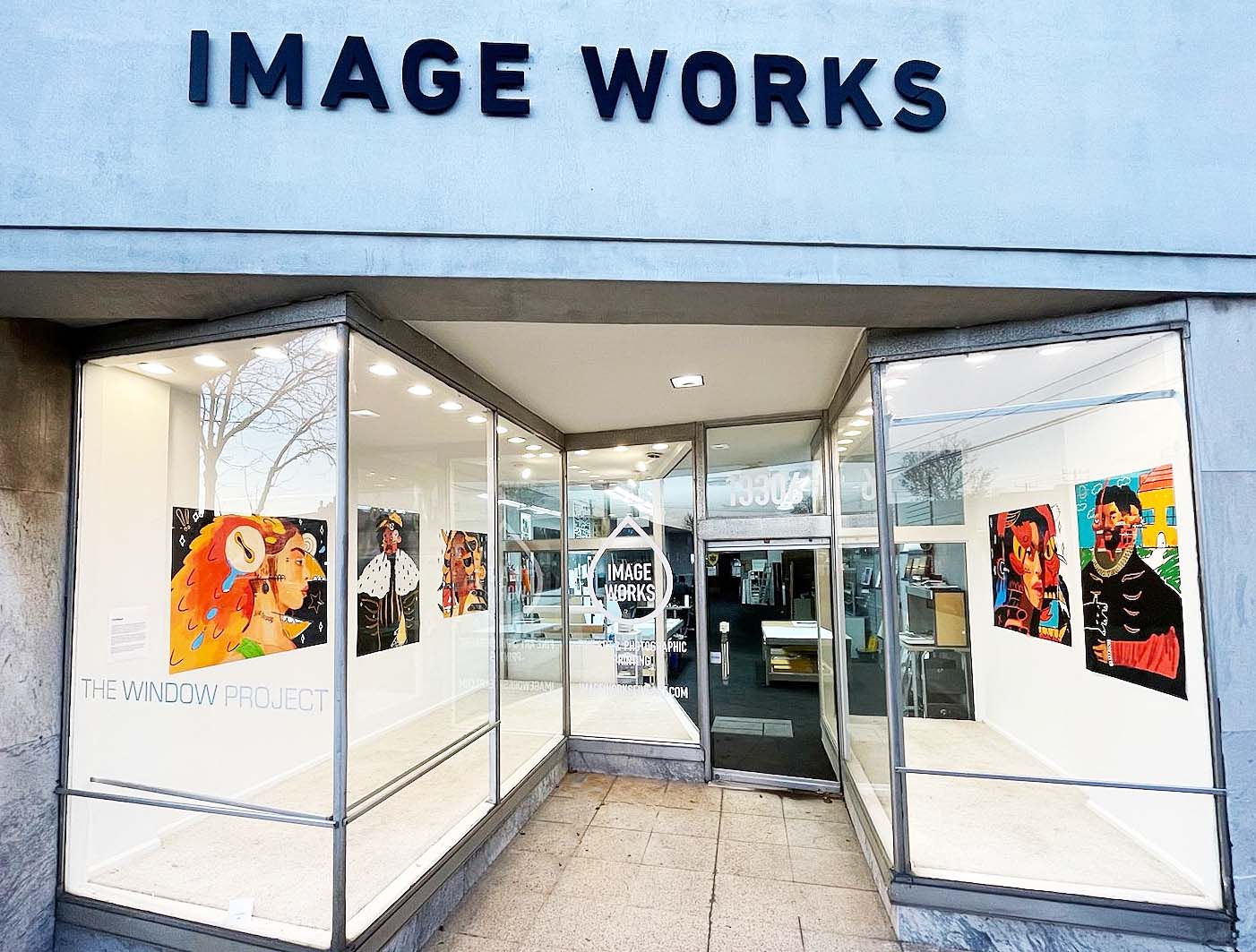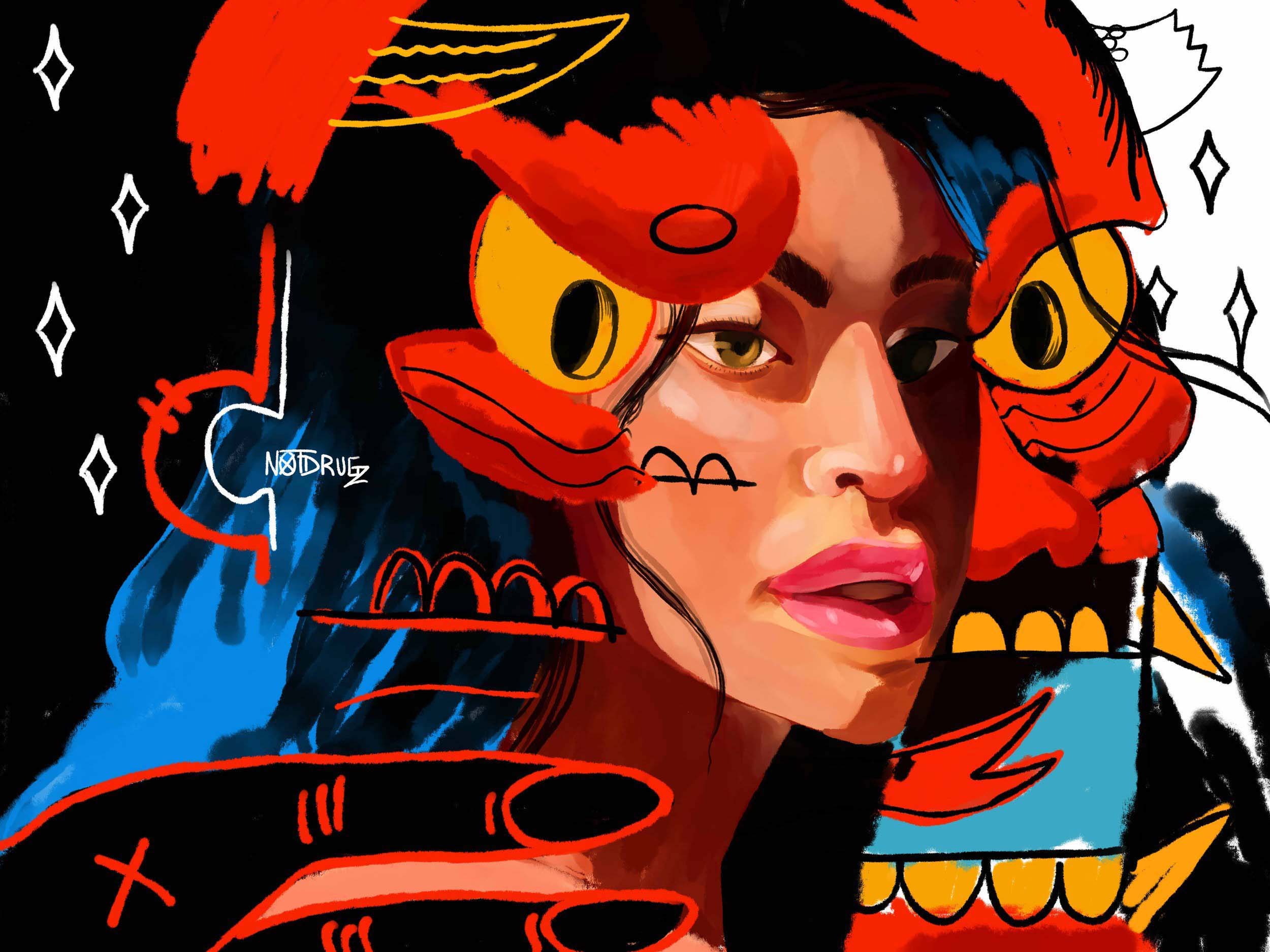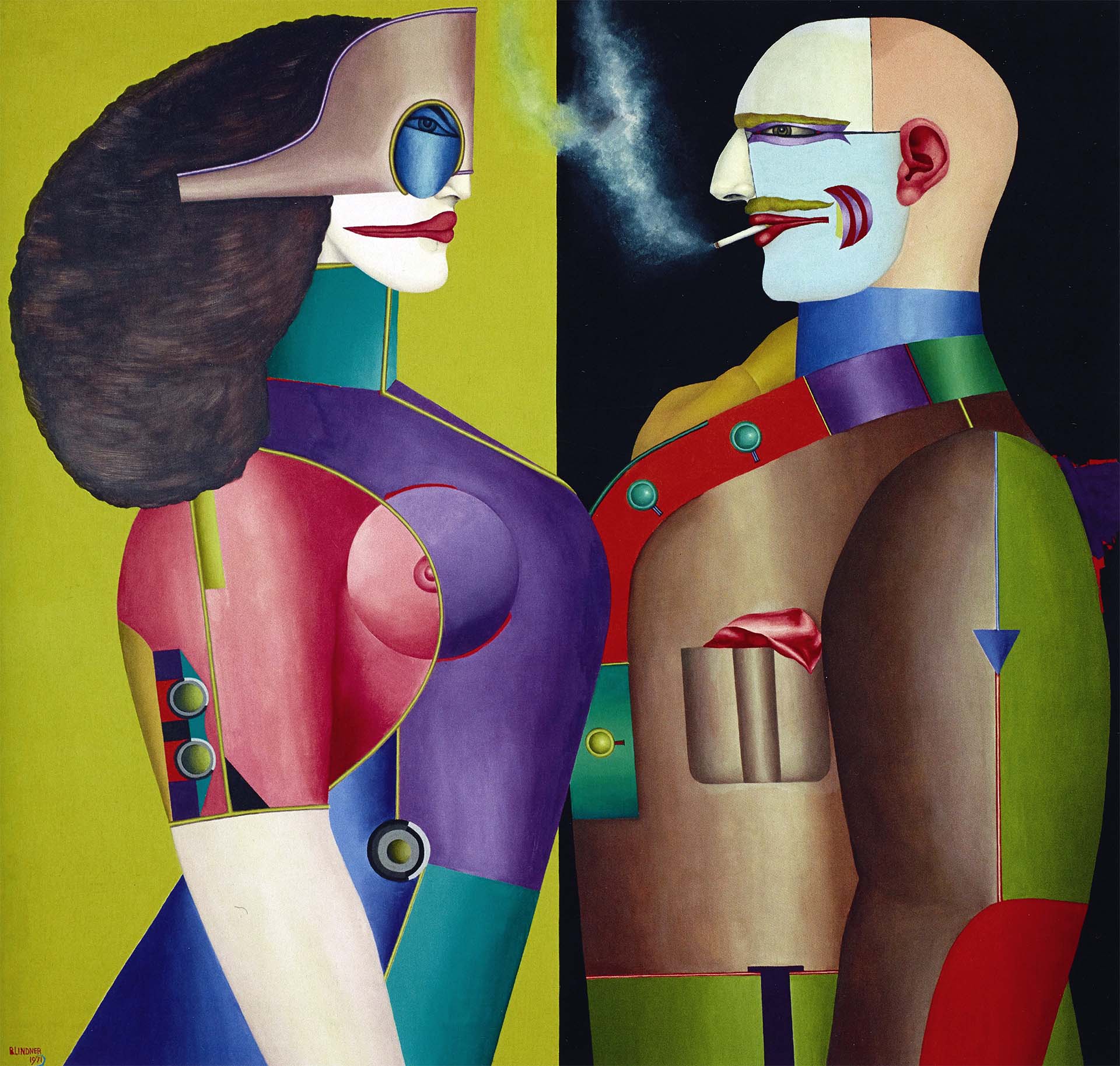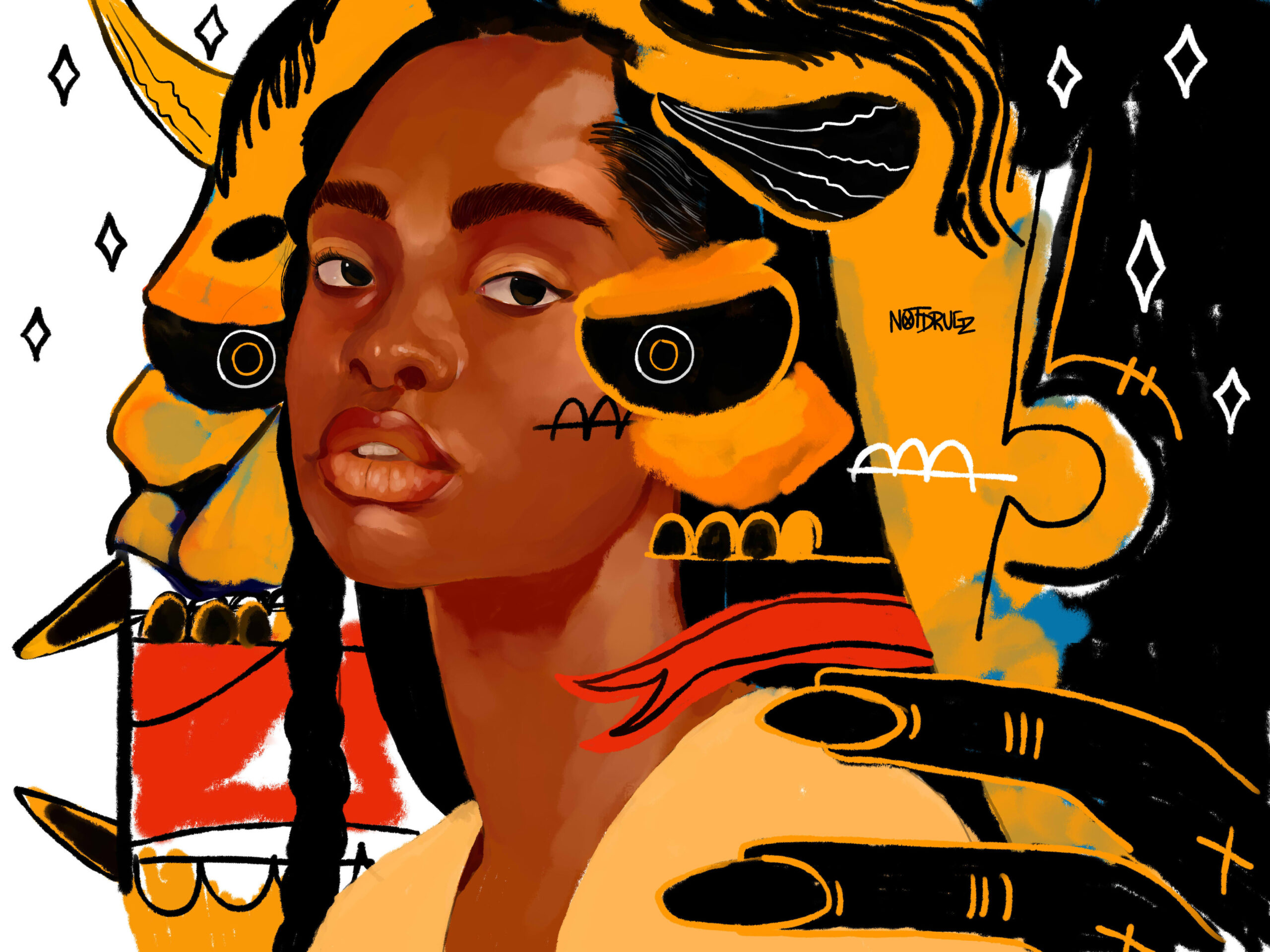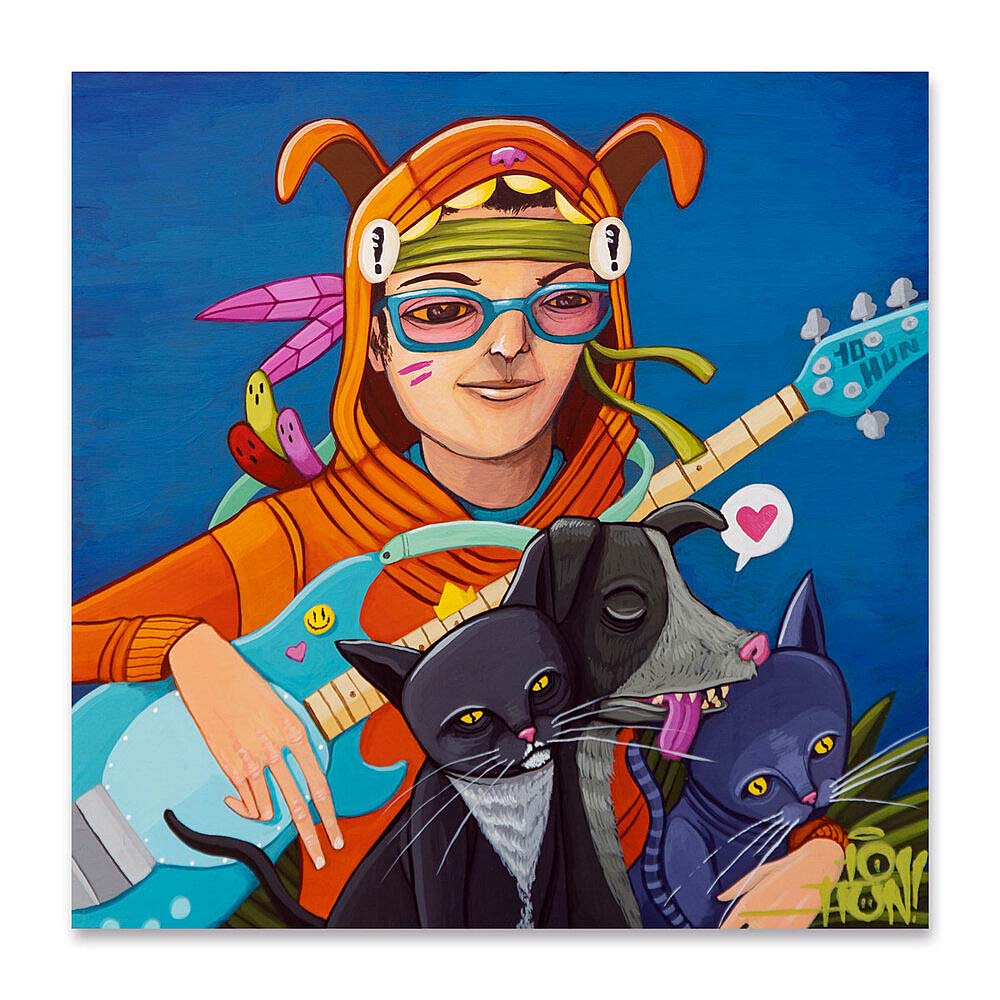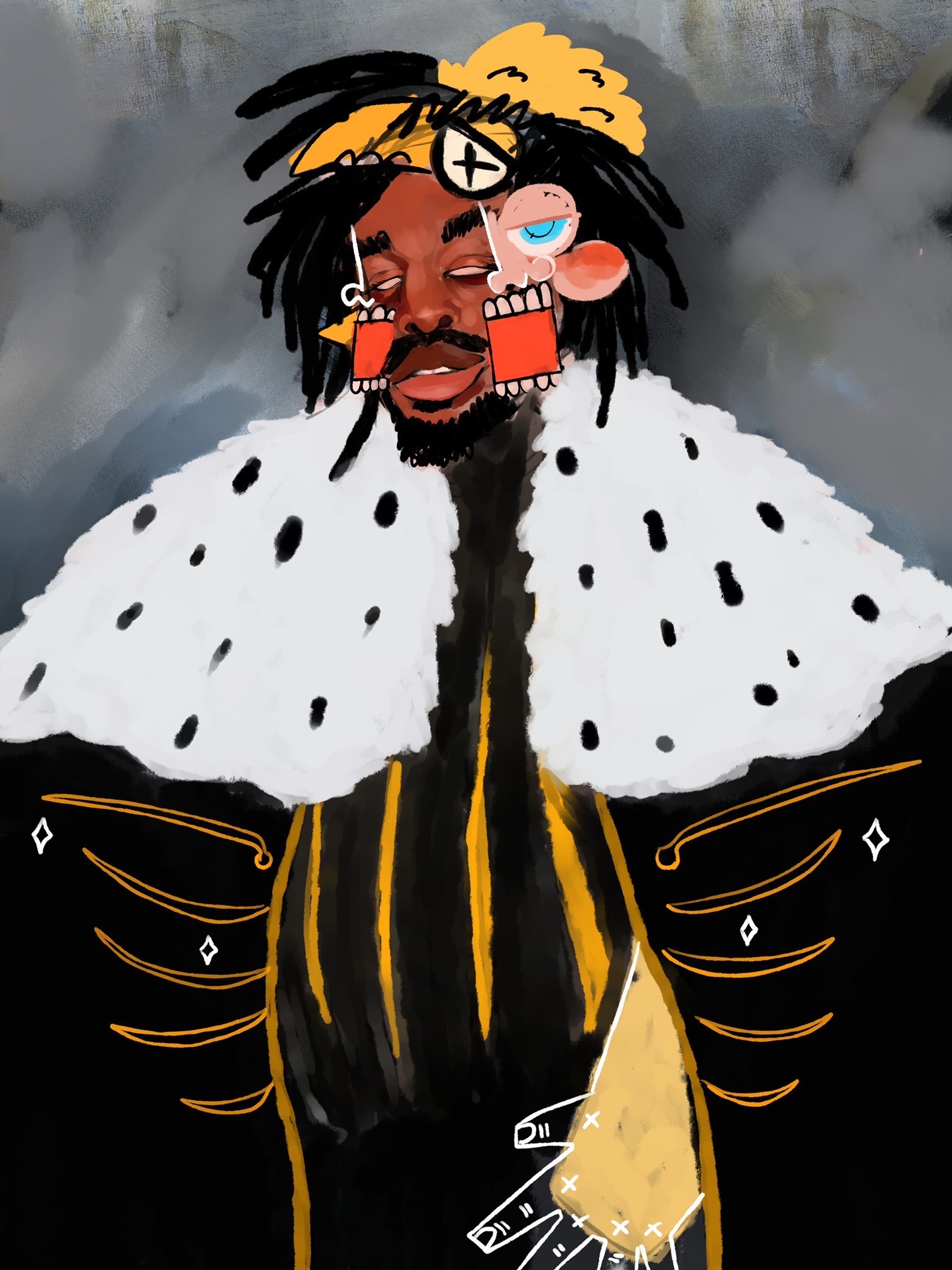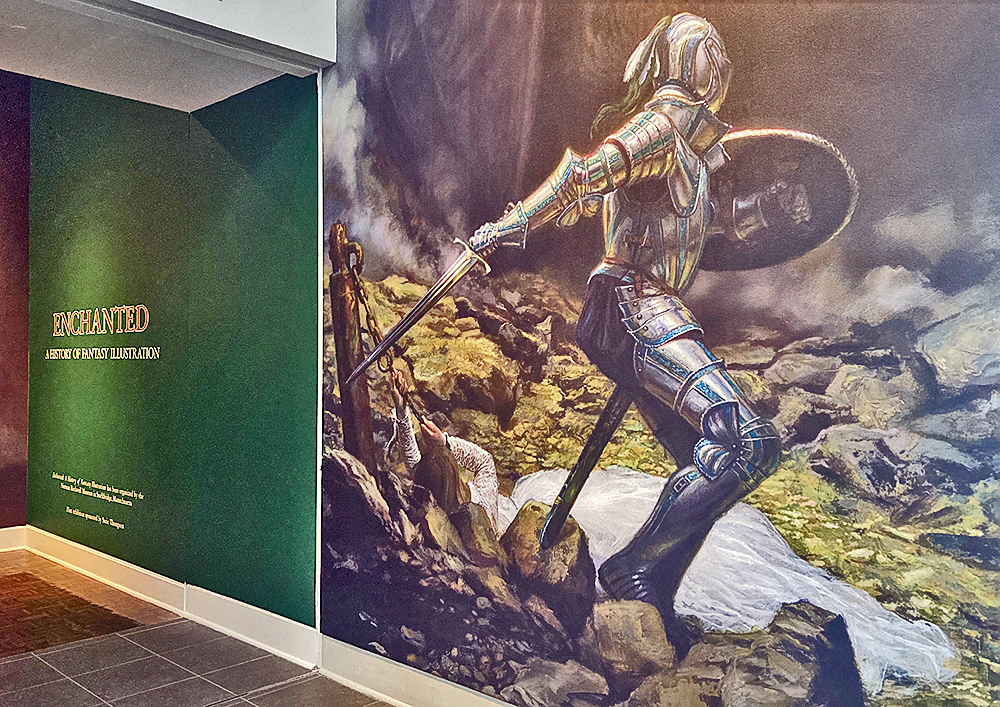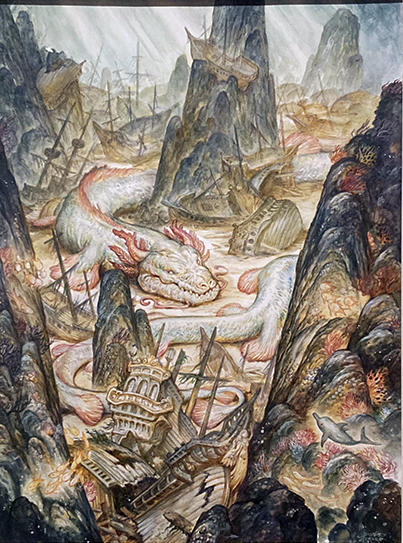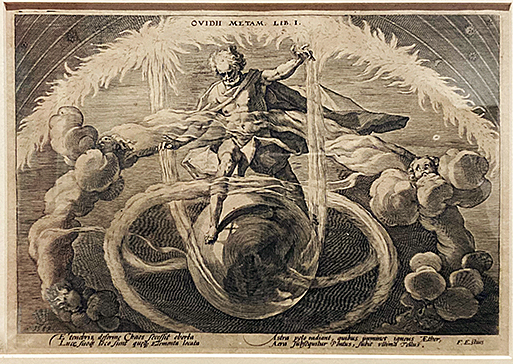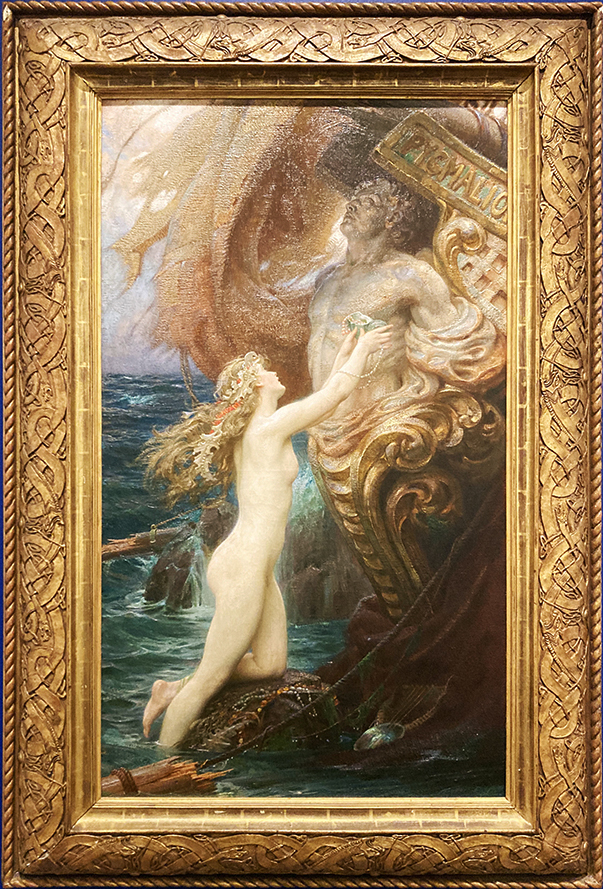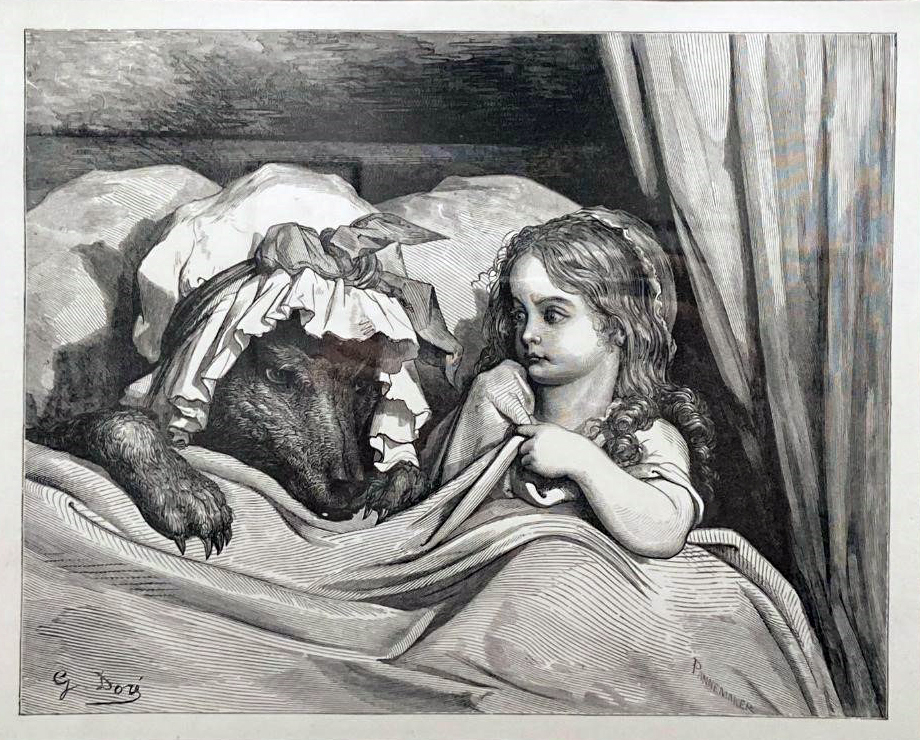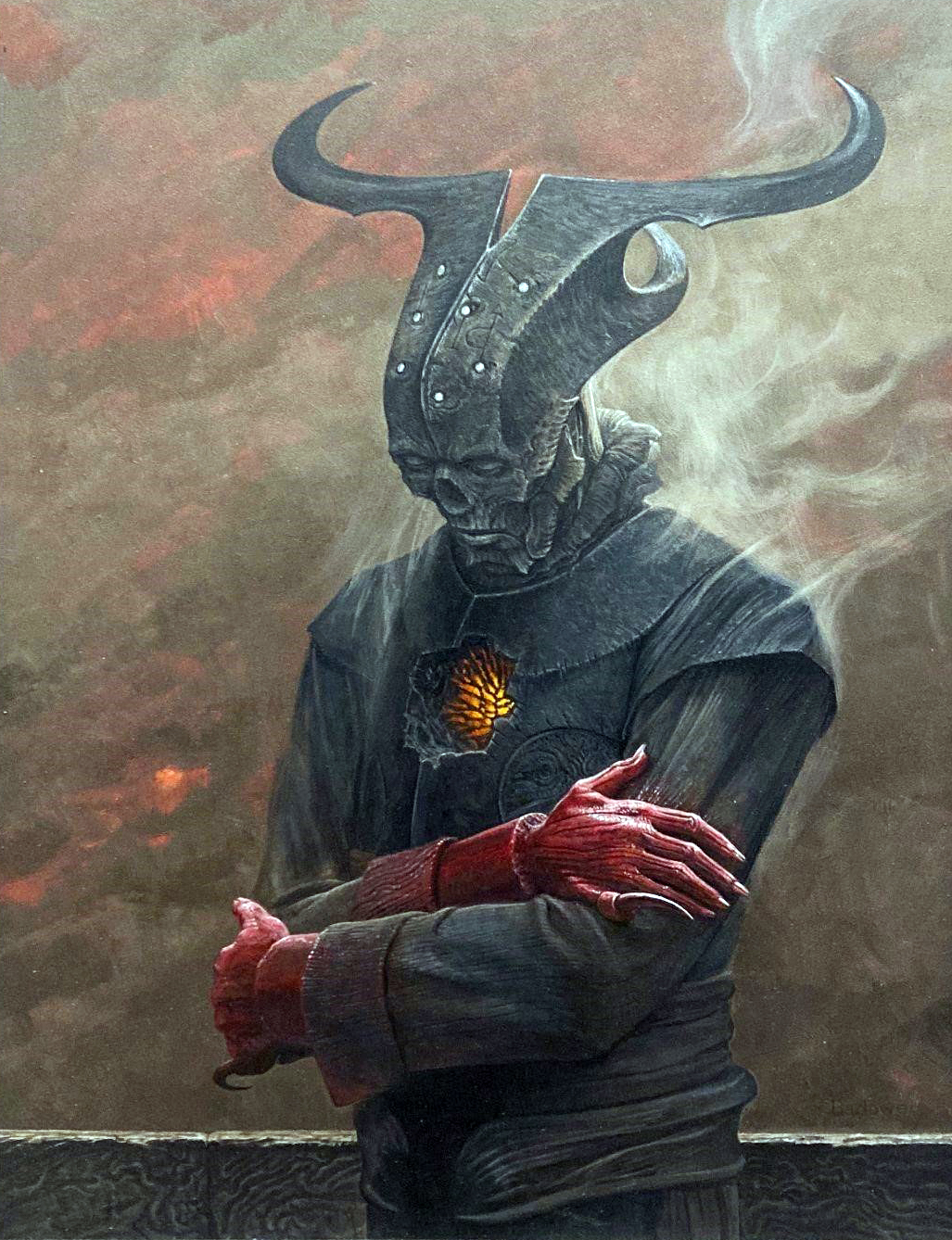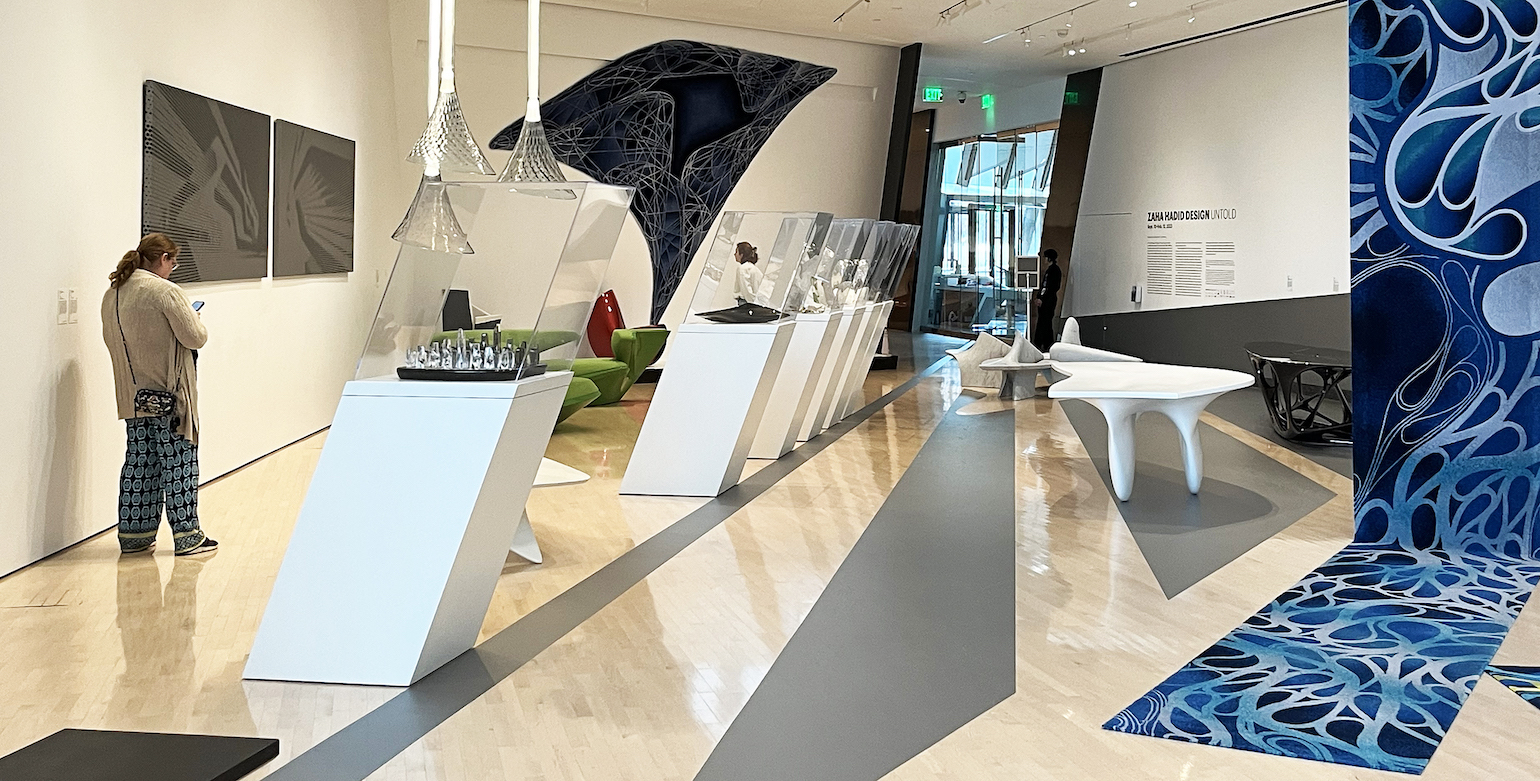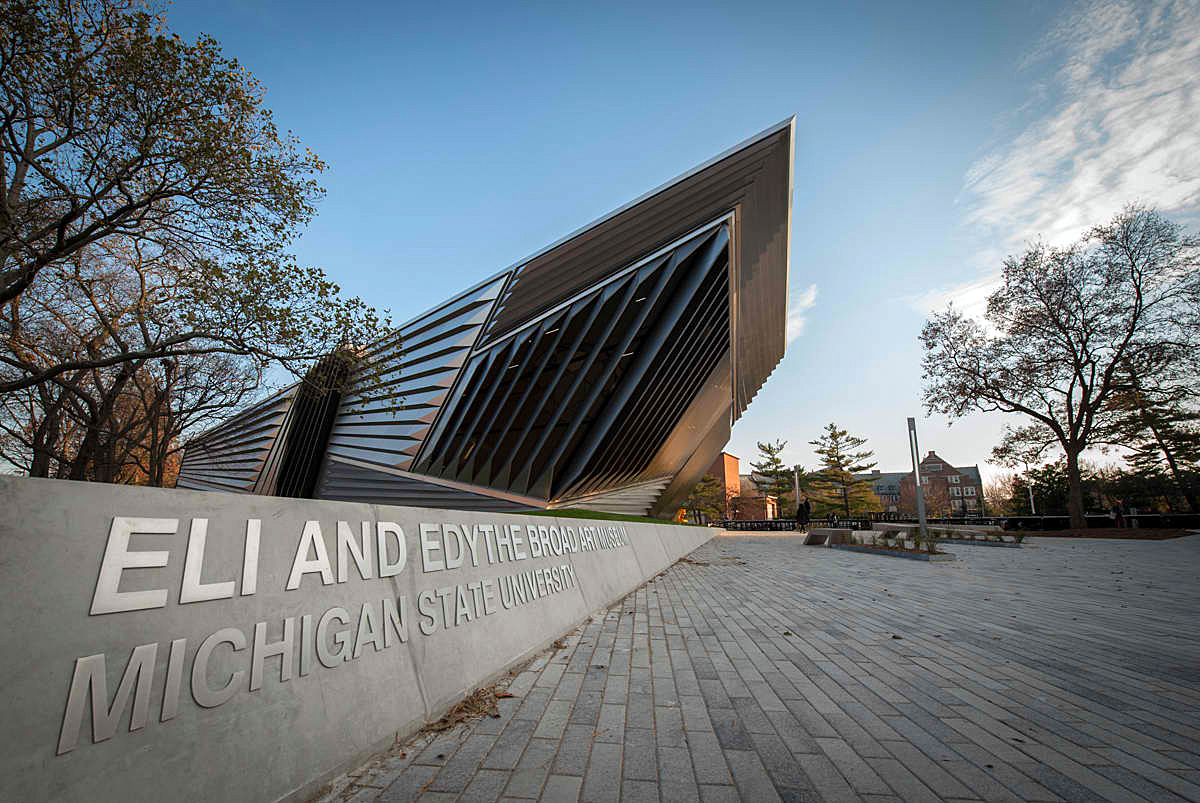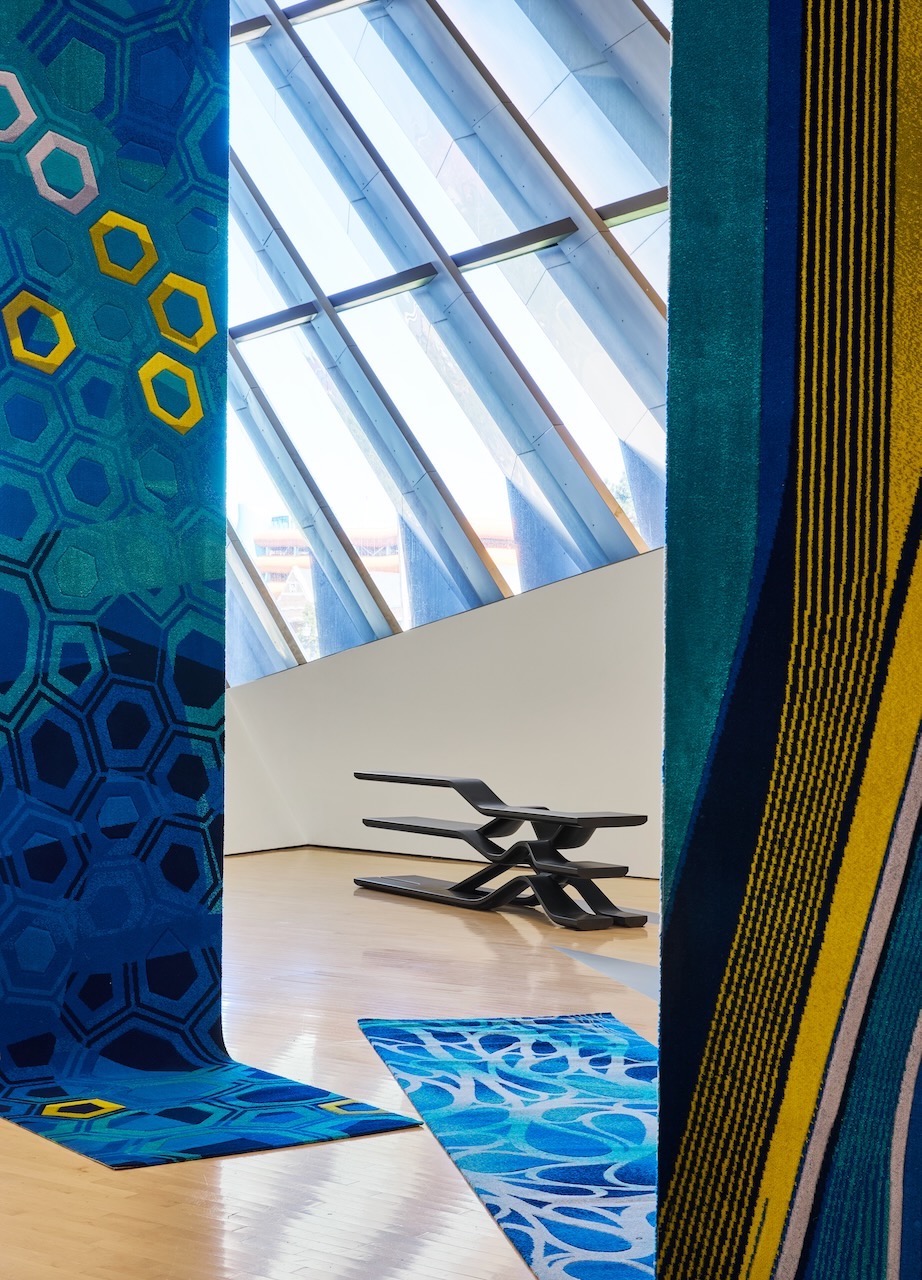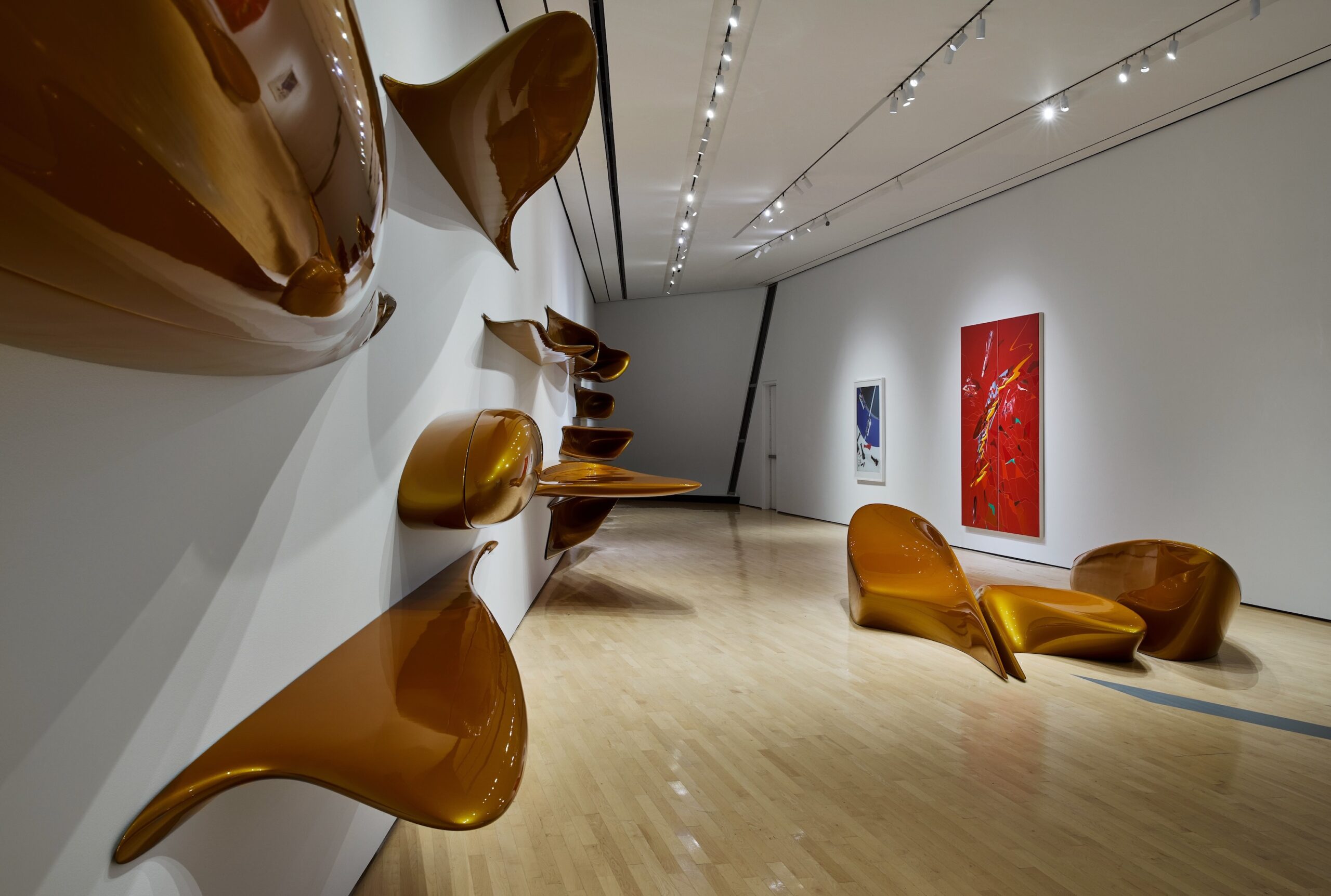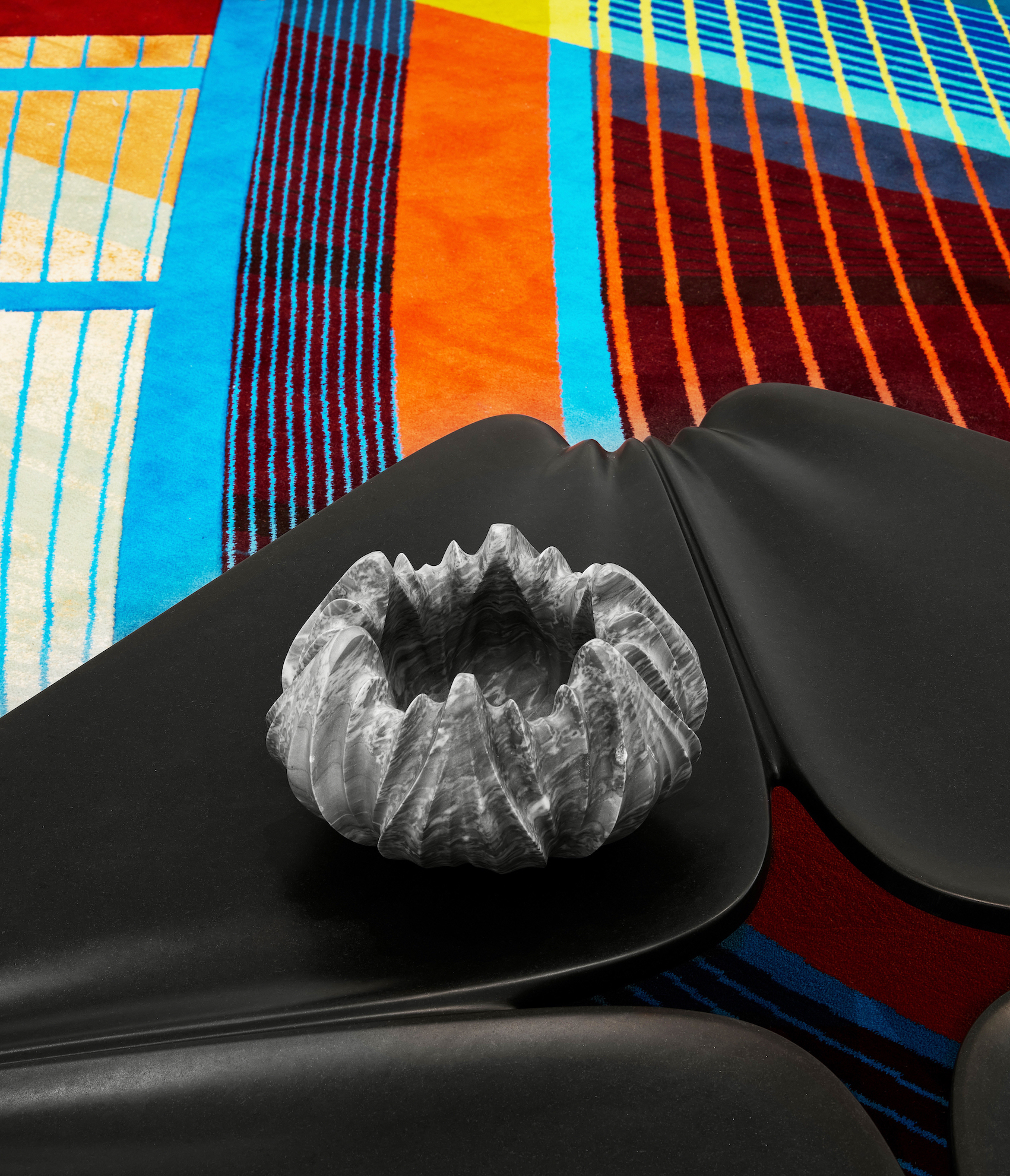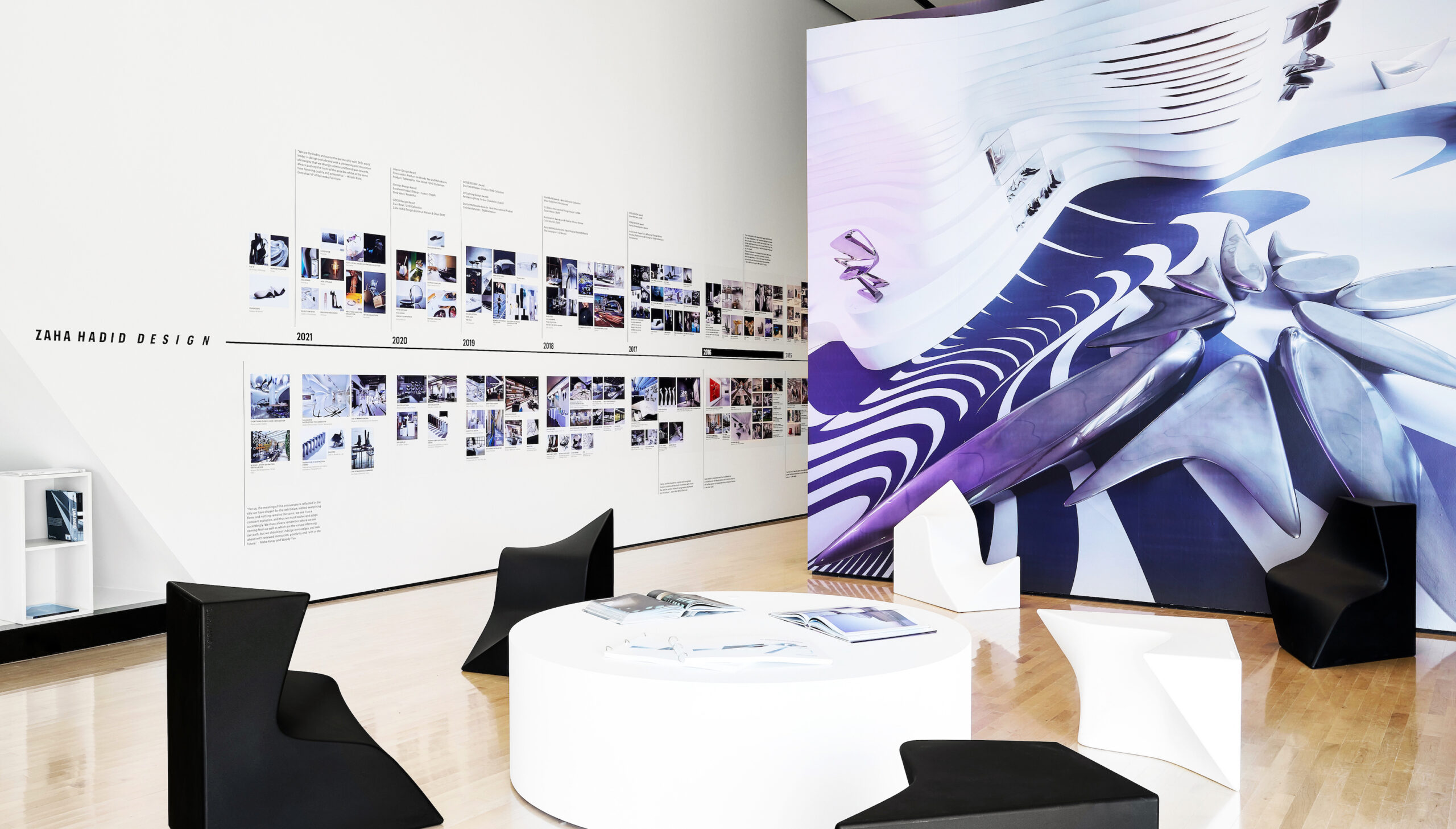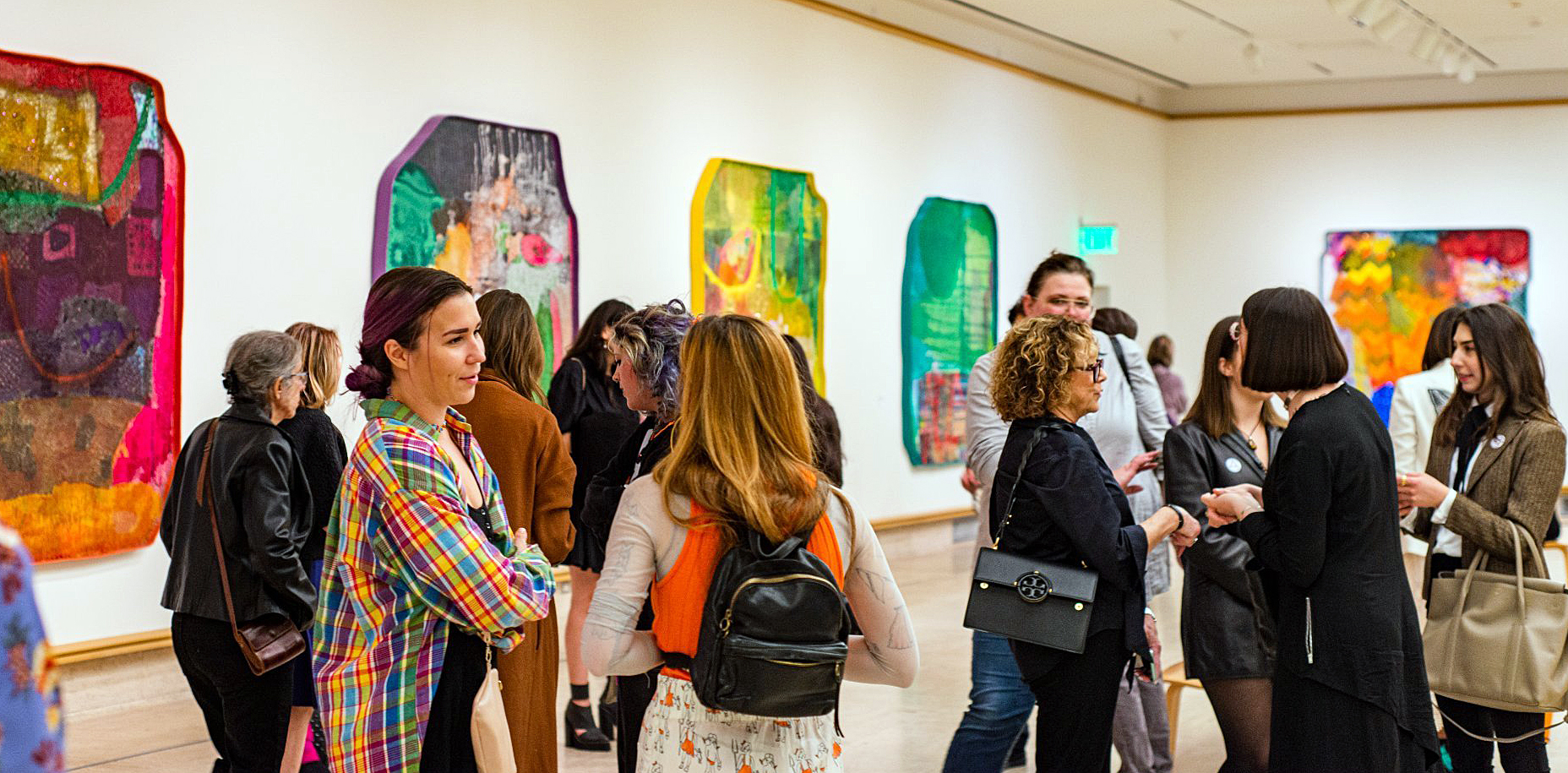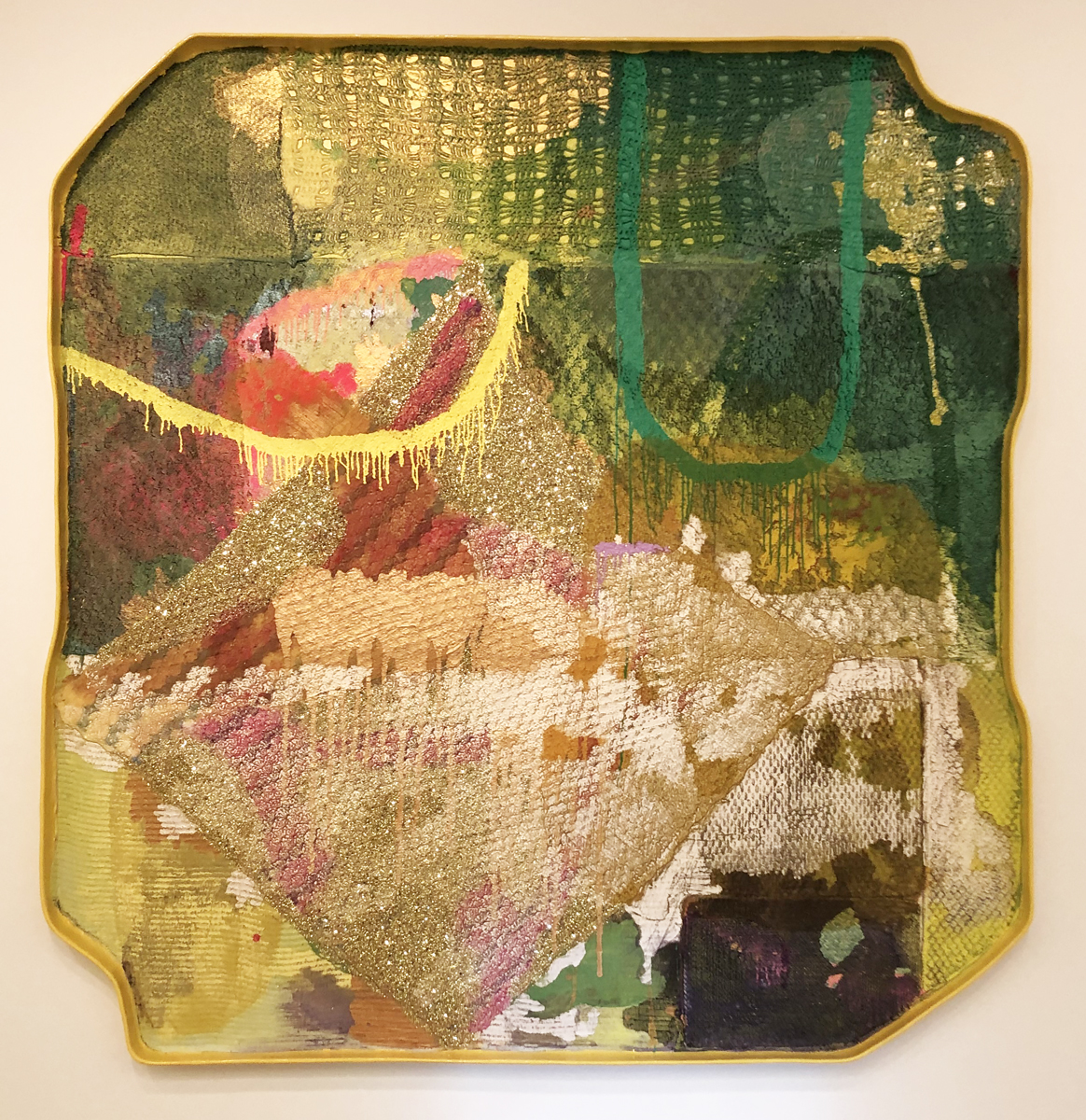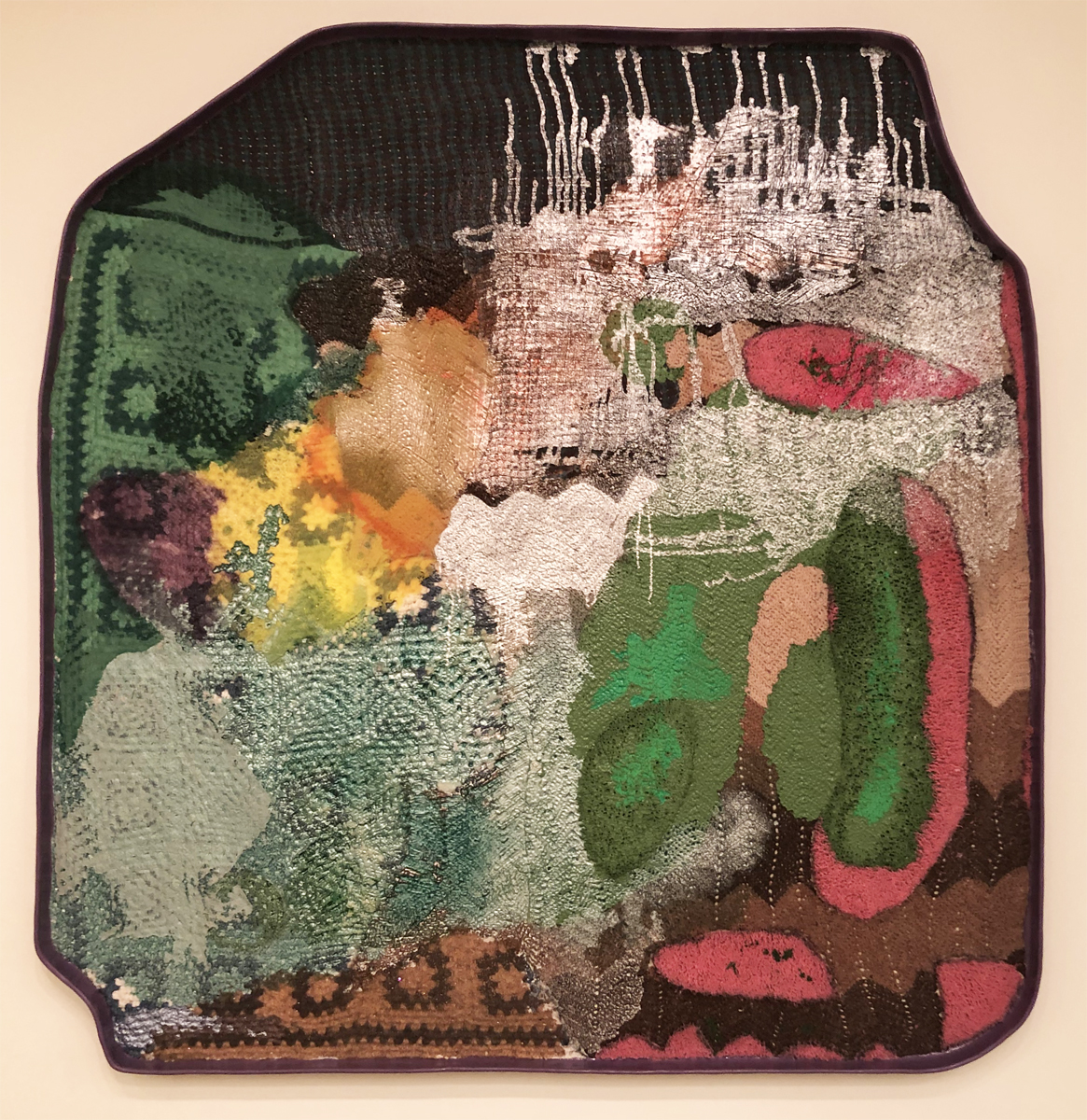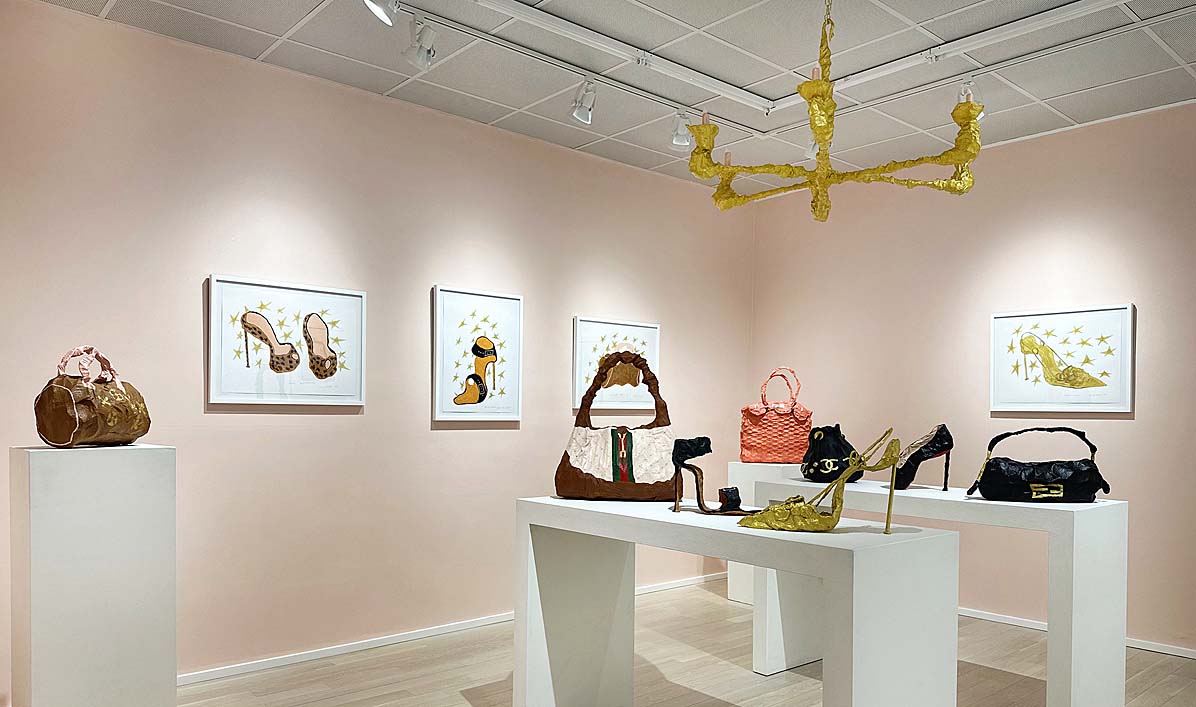
Mary-Ann Monforton, Luxe, installation, David Klein Gallery, 163 Townsend St., Birmingham MI
The breathless hype, the eye-watering price tags, the manufactured scarcity—we all recognize the strategies that the makers of designer goods use to promote luxury items. But Detroit artist Mary-Ann Monforton is having none of that. In her first solo exhibition at David Klein Gallery in the upscale Detroit suburb of Birmingham, she presents Luxe, a collection of 10 slightly oversized, comic replicas of well-known luxury brands that are both an homage and a send-up of late capitalist getting and having.
Monforton knows plenty about the world of red velvet ropes and status objects. Though she grew up in the Detroit area, her professional life has been centered in New York’s gallery and club scene, where she has lived several simultaneous lifetimes as a music promoter, art curator, visual artist and cultural media publisher. She has rubbed shoulders with late 20th and early 21st-century arts stars in her prolific and varied career–Keith Haring, Kenny Scharf and Jean Michel Basquiat, among others–and occasionally has collected their work.
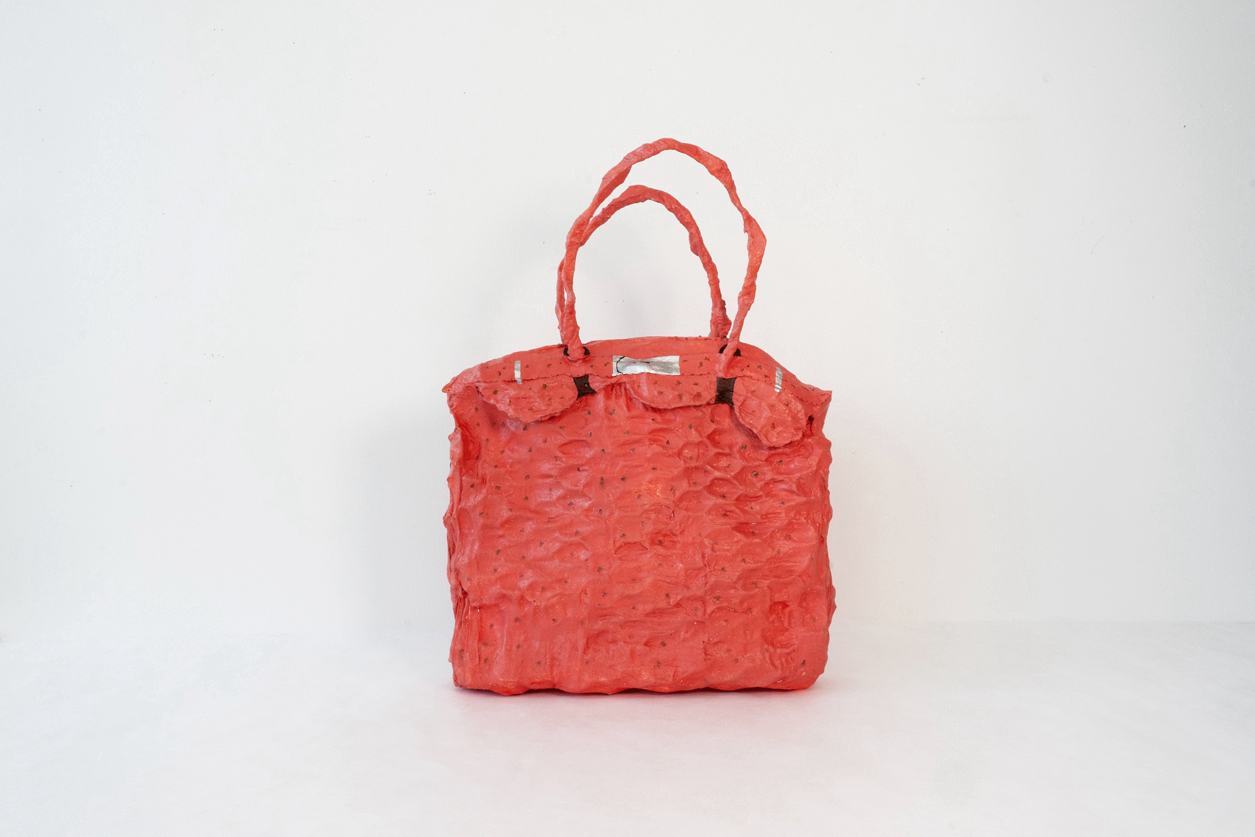
Mary-Ann Monforton, Hermes Birkin, 2022, wire mesh, plaster gauze, paint, 24.5” x 17” x 4”
Now that she is back in her hometown, Monforton is prepared to share a few thoughts on the pretensions inherent in the easily recognizable signifiers of status. Sharped-eyed but not unkind, her observations take the form of wonky and slyly ironic designer bags and shoes made of humble materials that loosely imitate prestigious consumer commodities.
The artworks in Luxe are installed in David Klein’s middle gallery, now painted blushy pink in a kind of shorthand nod to a high-end boutique. Artful silver wire stars hang from the ceiling and overhead a handmade imitation of a fancy chandelier casts a fictive glow on the bags and shoes below. Effortlessly holding the center of the space is an oversized replica of the iconic Hermes Birkin bag, in coral “ostrich,” for the fashionable giantess. Said giantess might also be interested in Monforton’s golden Valentino Garavani slipper with its pointy toe and (literally) spikey heel. The chic send-up of the Manolo Blahnik open-toe stiletto is likewise a winner in the Brobdingnagian fashion department. My personal favorite, though, is the improbably elegant black Louboutin Ballerina Ultimate, which manages to be both larger-than-life and dainty.

Mary-Ann Monforton, Valentino Garavani, 2022, wire mesh, plaster gauze, steel spike, string, paint, 11” x 6” x 17″
Monforton has some fun with the surface textures, colors and patterns of her fashionable facsimiles. On her Louis Vuitton “Speedy” bandouliere, she subverts the well-known, militantly regular Louis Vuitton surface pattern, exploding it into an irregular constellation scattered across the satchel’s surface–less elegant perhaps, but more expressive. The intertwined C’s on her Chanel Bucket bag are both instantly recognizable and hilariously awry. The materials that she references, lizard, ostrich, crocodile and precious metals–now rendered in plaster, wire mesh, and the odd metal spike–gleefully poke fun at the pretensions of the originals.
There is a kind of liveliness in these objects. They are imbued with character and seem ready to dance and move. Unlike the highly finished, larger-than-life sculptures of Claes Oldenburg, to which Monforton’s work is sometimes compared, these friendly avatars of luxury are approachable and relatable. In some ineffable way, they are human.
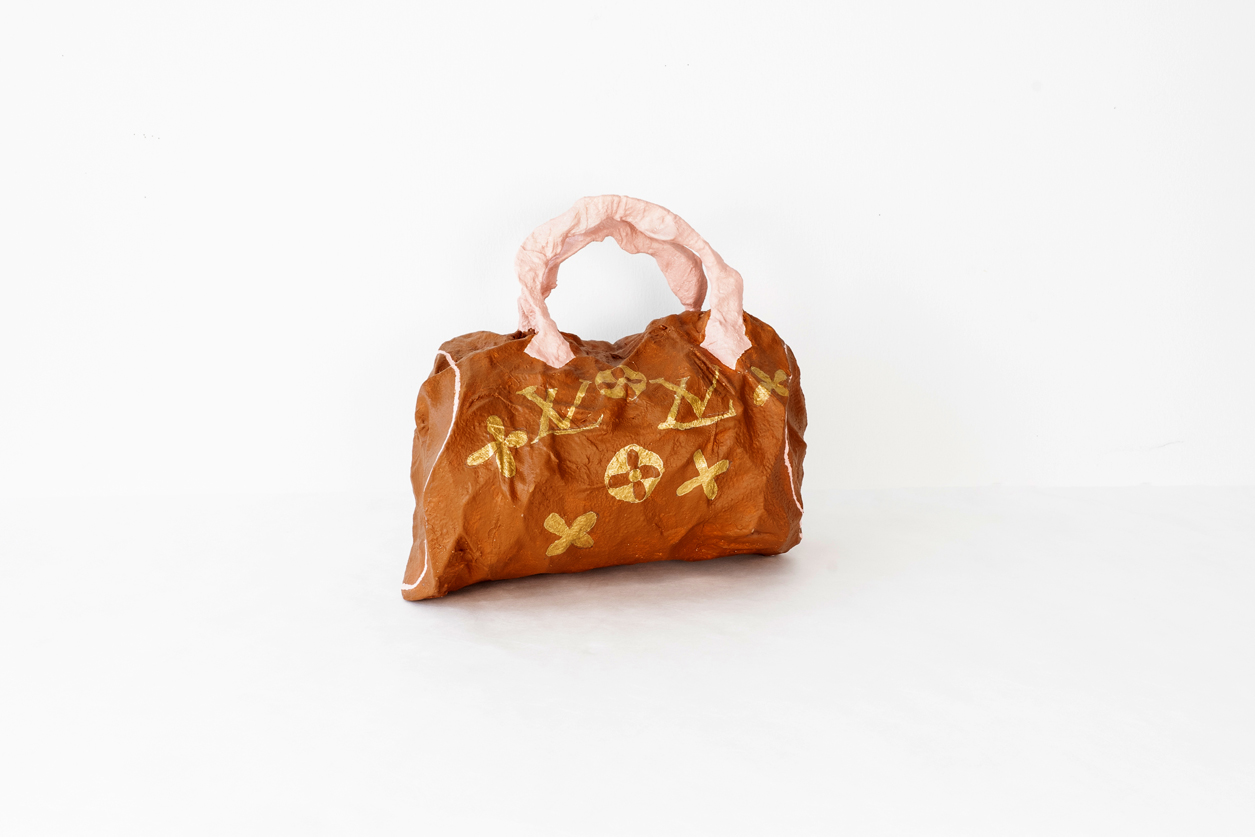
Mary-Ann Monforton, Louis Vuitton “Speedy” 2022, wire mesh, plaster gauze, paint, 14” x 5” x 9”
In addition to the three-dimensional artworks in Luxe, Monforton has created a series of drawings of her designer creations in pencil, pastel and paint on paper. Rather than preparatory drawings, the nine renderings were created after the fact in a kind of object portraiture that captures the soul of each subject, as any good portrait should. The drawing of a Chanel Bucket bag and Louboutin Ballerina Ultimate high heel, paired in imaginary conversation, make a harmonious comic duet. A drawing of a pair of Louboutin leopard peep-toe platforms surrounded by stars, like the other drawings, reveals the affection of the artist for the objects she has birthed. These animated images invite an immediate association to Andy Warhol’s 1955 drawings of fashion shoes, though the comparison is only glancing; Warhol’s shoes seem conventional and rather deadpan when compared to Monforton’s lively representations.

Mary-Ann Monforton, Louboutin Ballerina Ultimate, 2022, wire mesh, plaster gauze, paint, 12” x 5” x 9”
The artist’s history as a collector prepares her uniquely for her explorations into how we assign value to objects. In her artist’s statement, Monforton is clear about her aims: “These objects explore the psychology of fame, fortune, mega-wealth, and privileged consumption.” She continues, “The broader concepts of ascribing value to things is played out in this line of luxury goods that defy perfection and are rife with failure and humor.” The imperfect simulacra on display probe human preoccupations with social prestige and how it is related to craft and economy.
In Luxe, Mary-Ann Monforton combines her childlike joy in the making of a thing with a very adult moral framework that proposes the exchange of one set of values for another. She suggests a more humane ethic that privileges vulnerability and emotional expressiveness over materialistic status-seeking, perhaps a good new year’s resolution for 2023.

Mary-Ann Monforton, Chanel Bucket and Louboutin Ballerina Ultimate,2022, paint, pencil, pastel on paper, 18” x 24”
Luxe is on view at David Klein Gallery, 163 Townsend St., Birmingham, Michigan, through February 4, 2023.

